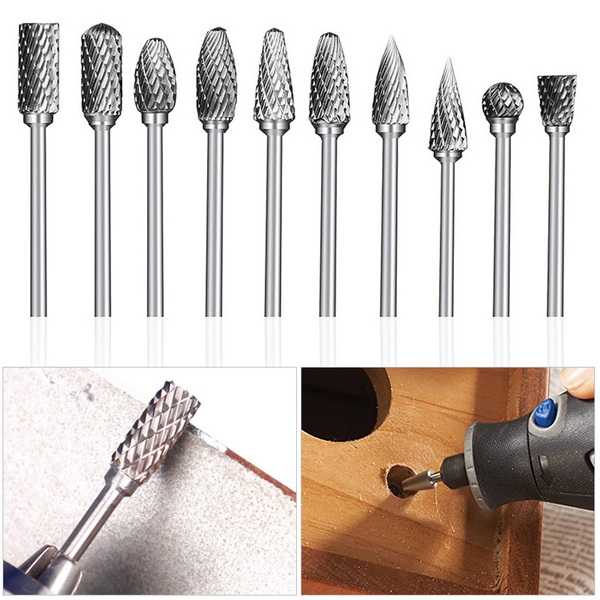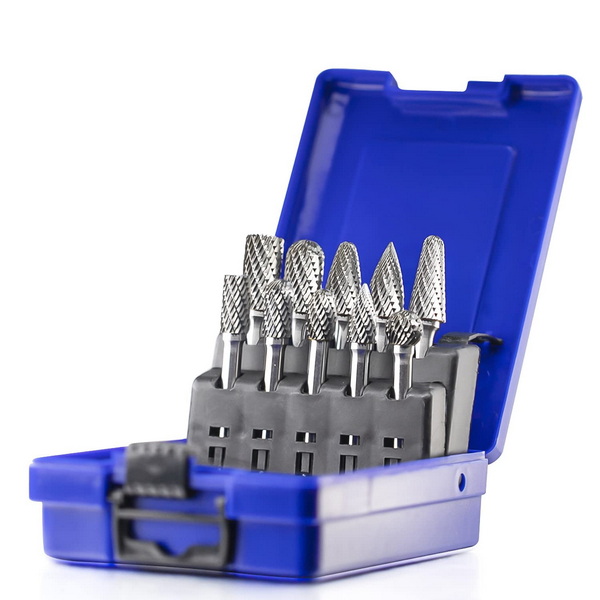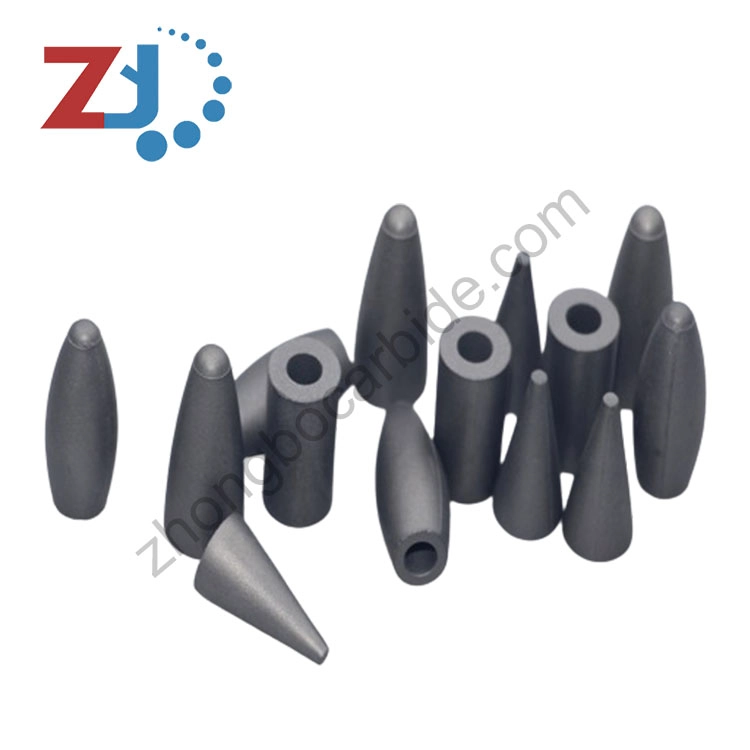Content Menu
● Introduction
● What is Rust?
● Does Tungsten Carbide Rust? The Short Answer
>> The Science Behind the Resistance
>> Practical Applications: Where Tungsten Carbide Shines
>> Factors Affecting Corrosion Resistance
>> Maintenance Tips for Tungsten Carbide Products
● Comparative Analysis: Tungsten Carbide vs. Other Materials
>> Stainless Steel
>> Titanium
● Case Studies: Real-Life Applications of Tungsten Carbide
>> Oil and Gas Industry
>> Aerospace Industry
>> Medical Industry
● Environmental Impact Considerations
● Future Trends in Tungsten Carbide Use
● Conclusion
● FAQ
>> 1. Does tungsten carbide rings rust?
>> 2. Can you wear a tungsten ring while swimming?
>> 3. How does tungsten carbide compare to other metals regarding corrosion?
>> 4. Is there any maintenance required for tungsten carbide jewelry?
>> 5. Can tungsten carbide corrode in acidic environments?
● Citations:
Introduction
Tungsten carbide is a remarkable compound, a robust fusion of tungsten and carbon atoms. Celebrated for its exceptional hardness and impressive resistance to wear, tungsten carbide has become an indispensable material across a wide spectrum of applications. From the precision of industrial tools to the elegance of modern jewelry and the reliability of mechanical components, its versatility knows few bounds. A question that frequently arises, particularly when considering its use in diverse environments, is whether tungsten carbide is susceptible to rust when exposed to water. In this comprehensive guide, we will delve into the properties of tungsten carbide, explore its interaction with water, and examine its corrosion resistance in detail. Understanding these characteristics is crucial for anyone considering or currently using tungsten carbide in applications where moisture is a factor.

What is Rust?
Before we delve into the specifics of tungsten carbide, it is important to define what we mean by "rust." Rust is a term strictly and specifically associated with the corrosion of iron and its alloys. This corrosive process occurs when iron reacts with oxygen in the presence of moisture, resulting in the formation of iron oxides, commonly recognized as rust. This reddish-brown coating not only mars the appearance of iron-based materials but also compromises their structural integrity, leading to weakening and eventual failure.
Since tungsten carbide is a compound of tungsten and carbon, and contains no iron, it does not rust in the traditional sense. However, this does not mean that tungsten carbide is immune to all forms of corrosion. Instead, it may be subject to other types of chemical degradation, depending on the specific environmental conditions to which it is exposed. Understanding these alternative forms of corrosion is essential for ensuring the longevity and performance of tungsten carbide in various applications.
Does Tungsten Carbide Rust? The Short Answer
The straightforward answer is: No, tungsten carbide does not rust. The inherent properties of tungsten carbide provide it with a high degree of resistance to oxidation and corrosion. Unlike iron-based metals, which are notoriously prone to rusting, tungsten carbide is designed to maintain its appearance and structural integrity even when subjected to prolonged exposure to water, including saltwater. This inherent chemical stability makes tungsten carbide an excellent material for use in a wide array of environments without the significant risk of rust formation.
The Science Behind the Resistance
The exceptional corrosion resistance of tungsten carbide can be attributed to several key factors:
- Stable Oxide Layer: When exposed to air or moisture, tungsten carbide forms a stable and protective oxide layer on its surface. This layer acts as a barrier, preventing further oxidation of the underlying material and shielding it from corrosive agents.
- Chemical Stability: Tungsten carbide exhibits remarkable chemical stability against most acids and alkalis. This resistance to chemical attack makes it well-suited for use in harsh and demanding environments where other materials would quickly degrade.
- High Hardness: With a hardness that often exceeds 90 HRA (Rockwell Hardness A scale), tungsten carbide is incredibly resistant to wear and tear. This hardness contributes to its longevity in abrasive applications and helps to maintain its structural integrity in challenging conditions.
Practical Applications: Where Tungsten Carbide Shines
The inherent corrosion resistance of tungsten carbide makes it an invaluable material in a multitude of fields and applications:
- Jewelry: Tungsten carbide rings have gained immense popularity due to their exceptional durability and scratch resistance. They can be worn daily, even during activities that involve exposure to water, without fear of tarnishing or rusting.
- Industrial Tools: Tungsten carbide is widely used in manufacturing cutting tools such as drills, mills, and inserts due to its ability to withstand extreme pressures and temperatures without degrading. Its resistance to wear ensures longer tool life and reduced downtime for replacements.
- Mining Applications: In mining operations where equipment faces abrasive materials, tungsten carbide components are employed for their durability. They can endure harsh conditions while maintaining performance standards.
- Marine Engineering: The marine environment poses significant challenges due to saltwater corrosion. Tungsten carbide's resistance to saltwater makes it ideal for components such as propeller shafts and bearings used in marine vessels.
Factors Affecting Corrosion Resistance
While tungsten carbide exhibits remarkable resistance to rusting and corrosion under normal conditions, several factors can influence its performance:
- pH Level: The pH level of the environment plays a crucial role in determining the corrosion behavior of tungsten carbide. Research indicates that tungsten carbide with cobalt binder shows good corrosion resistance at pH levels above 9 but may experience degradation at lower pH levels due to increased acidity.
- Temperature: Elevated temperatures can affect the stability of the protective oxide layer on tungsten carbide surfaces. In extreme heat conditions, wear rates may increase if proper cooling measures are not implemented.
- Chemical Exposure: While generally resistant to many chemicals, prolonged exposure to strong acids or alkalis can lead to degradation over time. It's essential for users in industrial settings to evaluate their specific environments carefully.
Maintenance Tips for Tungsten Carbide Products
Although tungsten carbide requires minimal maintenance due to its durability, following some simple care tips can help preserve its appearance:
1. Regular Cleaning: Clean your tungsten carbide jewelry or tools with mild soap and warm water using a soft cloth or sponge. Avoid harsh chemicals that could damage the surface.
2. Avoid Abrasives: While tungsten carbide is hard, avoid using abrasive cleaners or scrubbing pads that could scratch or dull its finish.
3. Store Properly: For jewelry items like rings or bracelets, store them separately from other jewelry pieces to prevent scratching.
4. Inspect Regularly: For industrial tools or components, regular inspections can help identify any signs of wear or damage early on.
5. Professional Polishing: If jewelry loses its shine over time due to everyday wear, consider having it professionally polished by a jeweler who specializes in tungsten carbide.

Comparative Analysis: Tungsten Carbide vs. Other Materials
To fully appreciate the benefits of tungsten carbide, it is useful to compare its corrosion resistance to that of other commonly used materials, such as stainless steel and titanium.
Stainless Steel
Stainless steel is often lauded for its corrosion resistance, and it does indeed offer good protection against rust in many environments. However, stainless steel is susceptible to pitting corrosion, especially in the presence of chlorides, such as those found in saltwater. This means that over time, stainless steel can develop small, localized areas of corrosion that can weaken the material. Tungsten carbide, on the other hand, is virtually immune to pitting corrosion, making it a superior choice for marine applications or other environments where chlorides are present.
Titanium
Titanium is another material known for its excellent corrosion resistance. It is also lightweight and strong, making it a popular choice for aerospace and medical applications. However, titanium is more expensive than tungsten carbide, and it is not as hard. This means that titanium is more susceptible to wear and tear, especially in abrasive environments. Tungsten carbide offers a better balance of corrosion resistance, hardness, and cost, making it a more versatile material for a wider range of applications.
Case Studies: Real-Life Applications of Tungsten Carbide
The superior properties of tungsten carbide have made it the material of choice in many demanding applications. Here are a few examples:
Oil and Gas Industry
In the oil and gas industry, tungsten carbide is used in drill bits, nozzles, and other components that are exposed to high pressures, abrasive materials, and corrosive fluids. The hardness and wear resistance of tungsten carbide ensure that these components can withstand the harsh conditions found in oil and gas wells, while its corrosion resistance prevents them from being damaged by the corrosive fluids.
Aerospace Industry
In the aerospace industry, tungsten carbide is used in turbine blades, bearings, and other components that must be able to withstand extreme temperatures and high stresses. The high melting point and strength of tungsten carbide make it an ideal material for these applications.
Medical Industry
In the medical industry, tungsten carbide is used in surgical instruments, dental tools, and other devices that must be able to be sterilized and resist corrosion. The chemical inertness of tungsten carbide makes it a safe and reliable material for medical applications.
Environmental Impact Considerations
The use of tungsten carbide can also have a positive impact on the environment. Because it is so durable and long-lasting, tungsten carbide components need to be replaced less often than components made from other materials. This reduces the amount of waste that is generated, and it also conserves resources. In addition, tungsten carbide can be recycled, which further reduces its environmental impact.
Future Trends in Tungsten Carbide Use
The demand for tungsten carbide is expected to continue to grow in the coming years, driven by the increasing need for durable, high-performance materials in a variety of industries. Some of the emerging trends in tungsten carbide use include:
- Additive Manufacturing: Additive manufacturing, also known as 3D printing, is being used to create complex tungsten carbide components with customized properties.
- Nanomaterials: Nanomaterials are being used to enhance the properties of tungsten carbide, such as its hardness and wear resistance.
- Coatings: Tungsten carbide coatings are being used to protect other materials from wear and corrosion.
Conclusion
In summary, tungsten carbide does not rust when exposed to water due to its unique chemical properties and high resistance to oxidation. Its stable oxide layer protects it from corrosion while maintaining structural integrity across various applications—from elegant jewelry pieces that withstand daily wear to industrial tools that endure extreme conditions. Understanding these properties allows users across different sectors—be it personal adornment or heavy machinery—to make informed decisions about utilizing tungsten carbide effectively.
With proper care and maintenance practices in place, products made from this remarkable material can offer years—if not decades—of reliable service without succumbing to rust or significant degradation. Its superior corrosion resistance compared to materials like stainless steel and titanium, combined with its exceptional hardness and wear resistance, make it an ideal choice for a wide range of demanding applications. From the oil and gas industry to the aerospace and medical fields, tungsten carbide is helping to improve performance, reduce costs, and minimize environmental impact.
As technology continues to advance, we can expect to see even more innovative uses for tungsten carbide in the future. With its unique combination of properties, tungsten carbide is sure to remain a material of choice for engineers, designers, and manufacturers for many years to come.

FAQ
1. Does tungsten carbide rings rust?
No, tungsten carbide rings do not rust. They are highly resistant to oxidation and maintain their appearance over time.
2. Can you wear a tungsten ring while swimming?
Yes, you can wear a tungsten ring while swimming as it is resistant to water exposure.
3. How does tungsten carbide compare to other metals regarding corrosion?
Tungsten carbide exhibits superior corrosion resistance compared to many other metals due to its stable oxide layer and high hardness.
4. Is there any maintenance required for tungsten carbide jewelry?
Minimal maintenance is required; regular cleaning with mild soap and water will keep it looking new without risk of rusting.
5. Can tungsten carbide corrode in acidic environments?
While generally resistant, prolonged exposure to strong acids can lead to corrosion over time.
Citations:
[1] https://www.boyiprototyping.com/materials-guide/does-tungsten-rust/
[2] https://www.carbide-part.com/blog/exploring-the-advantages-of-tungsten-carbide-excellent-corrosion-resistance/
[3] https://www.reefcentral.com/forums/showthread.php?t=1537282
[4] https://www.linkedin.com/pulse/corrosion-resistance-tungsten-carbide-shijin-lei
[5] https://www.hpnonline.com/sterile-processing/article/55233008/tungsten-carbide-versus-villains-is-it-rust-or-corrosion
[6] https://www.hyperionmt.com/en/Resources/materials/cemented-carbide/corrosion-resistance/
[7] https://www.researchgate.net/post/Tungsten-Carbide-Corrosion-in-Sea-Water
[8] https://www.hyperionmt.com/en/products/Wear-Parts/corrosion-resistant-carbide/
















